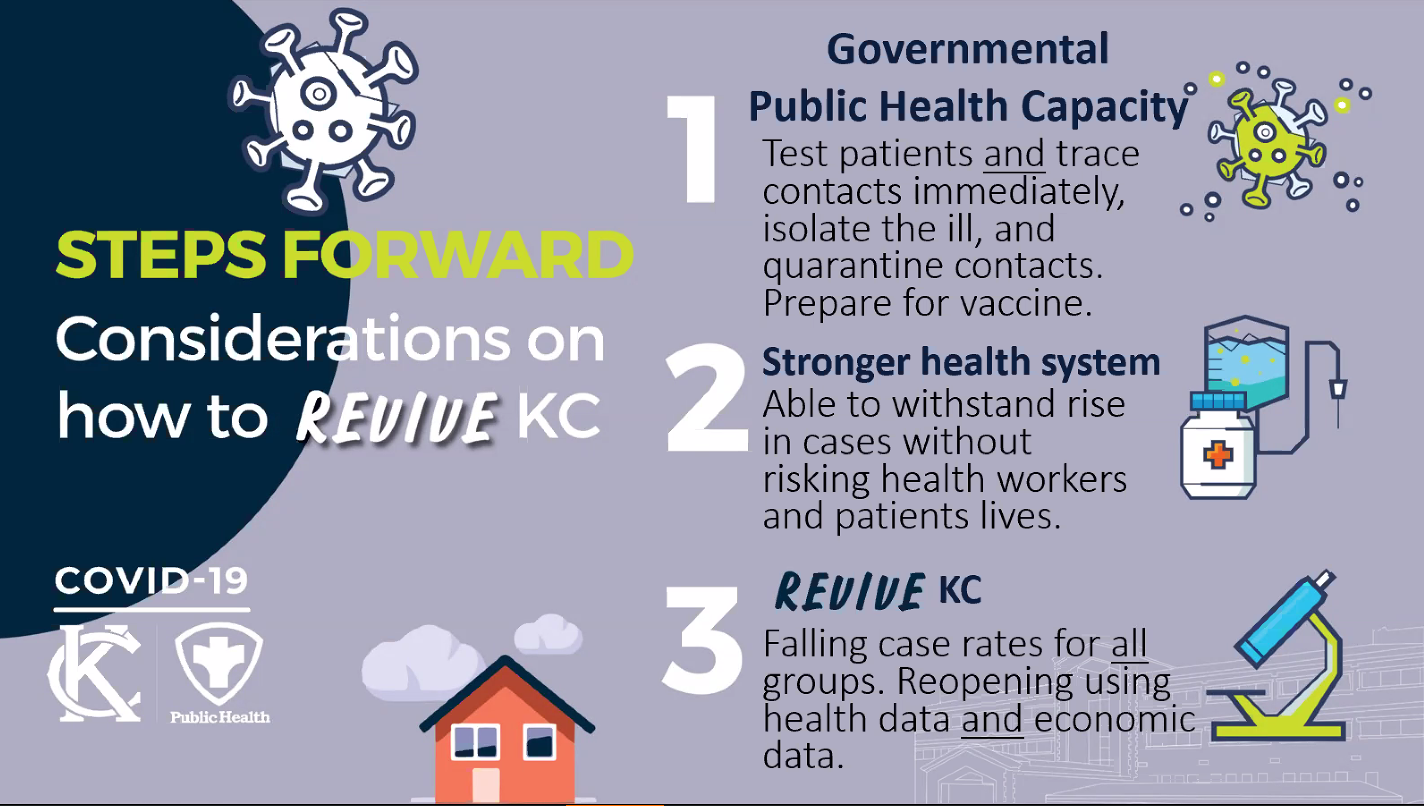Reopening KC in pandemic like lighting campfires in field of dry grass
Mayor Quinton Lucas Zoomed in from home to talk about pandemic measures in a Sixth Council District webinar Friday.
Mayor Quinton Lucas and KC Health Director Rex Archer feel like fire chiefs without a brigade, watching embers in the wind.
“When you don’t have the capacity to put out fires . . . you don’t allow campfires,” Archer said with Lucas on a Zoom call Friday morning in a Sixth Council District public chat hosted by Council members Kevin McManus and Andrea Bough.
Clockwise from upper left, Council member Kevin McManus, health director Rex Archer, Council member Andrea Bough and Mayor Quinton Lucas talked in a Sixth Council District webinar Friday.
But this is the scramble Kansas City is inviting, they said, as the city struggles to set a balance between the hardship — and deaths — that arise in an economic crash, and the pain and deaths that would come with waves of coronavirus outbreaks.
“It’s hard to find that sweet spot,” Archer said.
Get your LINC COVID-19 updates here.
Kansas City is still moving ahead — “as of now,” Lucas said — with plans to allow a phased reopening out of the city’s virus restrictions May 15.
But with it comes the message that anyone who can stay home, should continue to stay home. Those who go out and businesses that open should do so with safe spacing and masks.
New outbreaks affecting Kansas City, including in a St. Joseph meat plant and a Kansas City, North, nursing home, are stoking higher fears of larger outbreaks.
With some schools talking about trying to open in the summer, and some summer camp operations planning to enroll sessions, and other gatherings and businesses plotting ways to get going again, the situation may turn dire if people don’t take strict precautions, Archer said.
“We will probably see an explosion of cases,” he said. “The more that people voluntarily comply (with stay-home and mask precautions) the more likely we will be able to stay open longer . . . but I don’t like the odds.”
The city’s ability to respond to the recent outbreak in the St. Joseph meat plant, Triumph Foods, bared the weaknesses still troubling the region.
More than 60 of the 422 people who tested positive for COVID-19 at the plant live in Kansas City’s Northeast neighborhood. Many of them are non-English speakers. Most rode to the plant in crowded buses.
“People don’t understand the complexity of a public health response. We are woefully behind in stopping an outbreak.”
The city’s small and overwhelmed arsenal of infection tracers has been scrambling over the past three days trying to interview the infected persons and then trace all of their contacts.
A community needs to be able to respond and quarantine within 24 hours.
“People don’t understand the complexity of a public health response,” Archer said. “We are woefully behind in stopping an outbreak.”
The city needs to be able to test enough to randomly identify people who are infected but don’t know it yet. History shows that for each person identified positive with a virus, that are 10 more cases yet unknown.
Archer estimated that the city needs to be able to test 700 people a day, and right now it’s hard to be able to test 100.
On Friday, the city was pushing to hire at least three more professional tracers “today,” Lucas said. The city hopes to be able quickly to hire 15 to 20.
“But every jurisdiction is trying to do the same thing,” Lucas said. And in truth, he said, the city needs 140.
With the right public response, and some luck, the city’s reopening phase May 15 could stand, and more restrictions be eased at the end of the month, Lucas said. But it’s impossible to know.
“These are aspirational guidelines,” he said.
A school superintendent recently asked the mayor if a mid-June graduation ceremony was possible. The mayor’s answer: “That would be a little bit hairy.”
Someone recently asked if a wedding planned for June 2 could still happen. “September would be more likely.”
And the NFL has scheduled the 2020 Season Opener between the Chiefs and the Houston Texans in the 78,000-seat Arrowhead Stadium for Sept. 10.
“We’ll see,” Lucas said. “They’ll have to go through Dr. Archer first.”
The point is, Lucas and Archer said, there is no way to know. They recognize the hardships on economically stressed families and businesses. The phased opening is taking a shot and getting more jobs and services moving again.
But that also places a load of faith and a large burden on everyone to keep up their staunch defenses against the virus.
Because, they warned, the worst is very likely still ahead.
By Joe Robertson/LINC Writer




